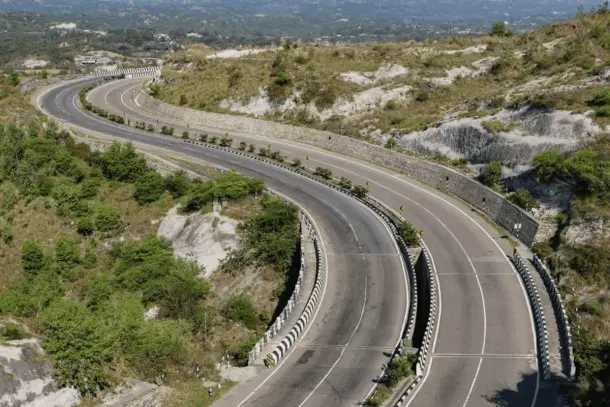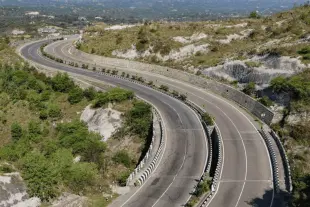Infrastructure
From Roads To Tunnels: Jammu And Kashmir’s Development Drive To Bolster Socio-Economic Growth
V Bhagya Subhashini
Nov 04, 2024, 04:46 PM | Updated 04:46 PM IST
Save & read from anywhere!
Bookmark stories for easy access on any device or the Swarajya app.


Jammu and Kashmir is set to undergo significant transformation as development and infrastructure projects take centre stage, addressing the region's longstanding socio-economic challenges.
Key projects currently underway in Jammu and Kashmir hold significant strategic value. Among them are the Zojila and Z-Morh tunnels, which will enhance connectivity between Kashmir and the rest of India.
These tunnels provide essential year-round access, especially important during harsh winter months that can isolate areas like Ladakh. The Zojila tunnel will link Sonamarg in Kashmir to Drass in Kargil, drastically reducing travel time from several hours to just 15 minutes, thereby improving logistics and security.
The Z-Morh tunnel, designed to bypass the avalanche-prone Gagangir area, connects Kangan town to Sonamarg, ensuring reliable access to Ladakh throughout the year.
Together, these projects will facilitate movement for both civilians and security personnel, strengthening the region's defense capabilities, particularly near the Line of Control (LoC). They serve a dual purpose: ensuring territorial integration and supporting national security by making remote areas more accessible.
In addition to these tunnels, the four-laning of the Jammu-Srinagar highway is set to create all-weather routes, significantly reducing travel time between the two regions.
This Rs 16,000-crore project traverses the mountainous terrain of Ramban and Banihal, incorporating 10 tunnels spanning 21.5 kilometers, as well as viaducts and bridges to maintain uninterrupted access, as per Financial Express report.
Enhanced road infrastructure is expected to stimulate economic activity by improving trade, tourism, and access to healthcare and education.
Another major initiative, the Srinagar Semi Ring Road, approved in 2021, aims to alleviate traffic congestion across five districts in the Kashmir Valley: Pulwama, Srinagar, Budgam, Baramulla, and Ganderbal.
With a budget of Rs 2,919 crore, this project includes a 60-kilometer road stretch, featuring around 300 culverts to manage water flow and minimize flood risks, alongside two flyovers and over-road bridges to streamline traffic.
Initially set for completion in February 2024, the project has faced delays and now targets June 2025 for completion. Once operational, it is expected to enhance mobility and connectivity for thousands of residents.
Additionally, the ongoing four-laning of the Srinagar-Baramulla-Uri highway, approved in 2022, is addressing critical traffic flow and safety issues.
This project covers two main phases, including the Narbal-Baramulla and Baramulla-Uri stretches, with planned bypass roads and flyovers to ease congestion in densely populated areas.
Budgeted at Rs 823.45 crore, this initiative aims to improve transport efficiency and boost local economic activity by facilitating smoother travel between key destinations.
As these infrastructure projects progress, they promise to reshape the socio-economic landscape of Jammu and Kashmir, fostering connectivity, enhancing security, and ultimately improving the quality of life for its residents.
V Bhagya Subhashini is a staff writer at Swarajya. She tracks infrastructure developments.





